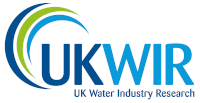Introducing the next phase of the Chemical Investigations Programme (CIP)
16/05/2024
CIP has provided significant benefits to the water industry since the first phase of investigations in AMP5 (2010). The programme started in response to current and emerging legislation on trace chemicals in the water environment, with CIP1 determining the sources and pathways of chemicals entering rivers, via wastewater treatment works (WwTW) discharges.
Following this, CIP2 expanded the number of WwTWs studied to understand the scale of the challenge, there were also trials of technologies to remove the chemicals before water is discharged to the environment.
The most recent phase of the programme to be completed, CIP3, evolved to also include investigations on Antimicrobial Resistance (AMR) and microplastics, further expanding the knowledge base for these important challenges.
“The power of delivering these investigations with UKWIR has been immeasurable – the sharing of knowledge, data and the reduction in duplicating trials has meant that there has been much more weight to the outputs.”
The CIP represents truly collaborative research between the water and sewerage companies in England and Wales, and the environmental regulators, which has significantly increased the evidence base for all areas covered within the programmes.
Benefits of the programme
The impact of the investigations is significant for the water industry. There have been many conferences over recent years where CIP data and outputs have been presented and discussed, so it has been a great source of information.
One of the most useful data sets and reports was on the trend-monitoring of a group of substances that have had their use restricted (22/EQ/01/30). The data has shown a decrease in concentrations over the monitoring which has meant that the restrictions have proved effective, as well as preventing the water industry from having to consider expensive and energy intensive removal technologies for these substances. This is a great result for the water industry and the environmental regulators too.
The companies will continue this monitoring for at least the next five years to further confirm the die-away trend over time.
The future of CIP
As we embark on the next phase, CIP4, we have an even greater variety of investigations lined up. There is so much we’ve learned already, but there’s always new and emerging issues to tackle too.
CIP4, which will start soon, includes even more investigations than CIP3. It will build on previously completed microplastics and AMR work and will now include an integrated constructed wetlands investigation. There will also be sampling for emerging substances, as well as the trend monitoring continuing.
The next phase will also include investigations on PFAS and PFOS; the companies will be trying to identify sources of PFOS within sewerage catchments and collecting data on several PFAS substances. There’s also going to be an investigation looking at the impact of spreading biosolids to soils and groundwater; we know this is a vital topic of interest to key stakeholders, so the collaborative research on this will be helpful for all the water companies.
To find out more about previous phases of CIP, please visit our publications page and search ”CIP” to explore our collection of reports and projects summaries published in relation to these ongoing investigations.
